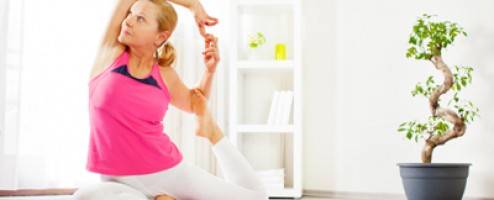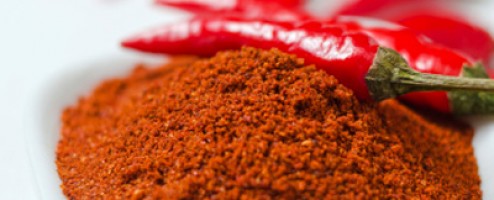
The Easiest Way to Get Fit Without the Gym
(www.agein.com article)
by Marni Andrews
There are many advantages to working out at home, two of the most obvious being not having to commute to the gym and saving on expensive membership fees. At-home fitness also means you skip the crowd that’s usually at the gym during peak hours—busy machines, limited locker space, and lack of privacy can turn off even the most committed exercisers. An at-home fitness plan can solve all of these problems.
At-home fitness can be useful for other reasons too, such as exercising with an injury or managing joint pain. In these circumstances, individuals who work out at home can focus on going at a pace that is comfortable for them instead of worrying about tying up communal machines for too long. Plus, the commute-free benefit of at-home fitness is even more valuable. Also, if you are trying to get fit at forty or fifty, and it’s been a while since you’ve done strenuous physical activity, it may be comforting to know that no one will be watching as you take your big step—albeit a slow one—toward healthier living.
Another advantage of at-home fitness is that you don’t need expensive, full-size equipment—using free weights can be just as effective, and they’re fairly affordable. The results of a study published in The Journal of Strength and Conditioning showed that when women lifted weights as part of an hour-long strength-training workout, they burned more calories afterward than if they had skipped the weights. Researchers have also found that weight lifting works to fight intra-abdominal fat—it’s actually been shown to work better than doing just cardio.
If you build your at-home fitness routine around doing a group of exercises as a circuit—doing various exercises in a series with little rest in between—it can be as effective as working out on a machine. For the best results, you want to mix up your at-home fitness routine.
Your cardio workout can also be easily covered in your at-home fitness plan, again without any machines. No equipment is required to go for a brisk walk or jog around your neighborhood. Besides, fitness experts believe that it’s actually better for you to run outside versus on a treadmill because the uneven surface of the pavement forces you to use other muscles in your body that you otherwise wouldn’t engage when using a treadmill.
If you’re planning to take up at-home fitness, here are some tips to keep in mind to get the most out of your workout:
- When you work out at home, it’s much easier to slack off. Choose a regular time and stick to your schedule to make sure it becomes a force of habit.
- Pick something that will remind you of your at-home fitness routine, like a yoga mat or workout gear, and place it in plain sight as a reminder.
- If you’re trying to exercise for weight loss, keep a photo of you at your heaviest weight somewhere conspicuous so that you’re constantly reminded of what can happen if you don’t stick to your at-home fitness plan.
- At-home fitness doesn’t mean you need to stay home. Take it outside for a brisk walk, run, or bike ride. Head to the park and use a tree for standing push-ups, and a park bench for tricep dips.
- Amp up your at-home fitness routine by fitting in workout movements throughout the day. While brushing your teeth, stand against the wall and slide down till you reach a seated position. Hold the squat till you finish brushing your teeth. While watching TV, try holding a plank position for increasingly longer periods.
- If you’re having trouble sticking to your at-home fitness plan, tell yourself you just have to get through 10 minutes at first. Once you get used to it, increase the time by a few minutes each week.
One of the biggest obstacles to guard against with at-home fitness is lack of motivation. Because you’re not going to an actual gym, it’s easy to convince yourself that your workout isn’t as important. When you work out at home, treat it as seriously as you would a trip to the gym, and it won’t be long before you start noticing results.
Source:
Aaronson, L., “The Best Strength Training for Women,” Women’s Health Magazine web site; http://www.womenshealthmag.com/weight-loss/weight-training-tips, last accessed June 19, 2013.
Andersen, C., “8 Reasons Why You Should Lift Heavier Weights,” Shape Magazine web site; http://www.shape.com/fitness/workouts/8-reasons-why-you-should-lift-heavier-weights?page=4, last accessed July 19, 2013.



